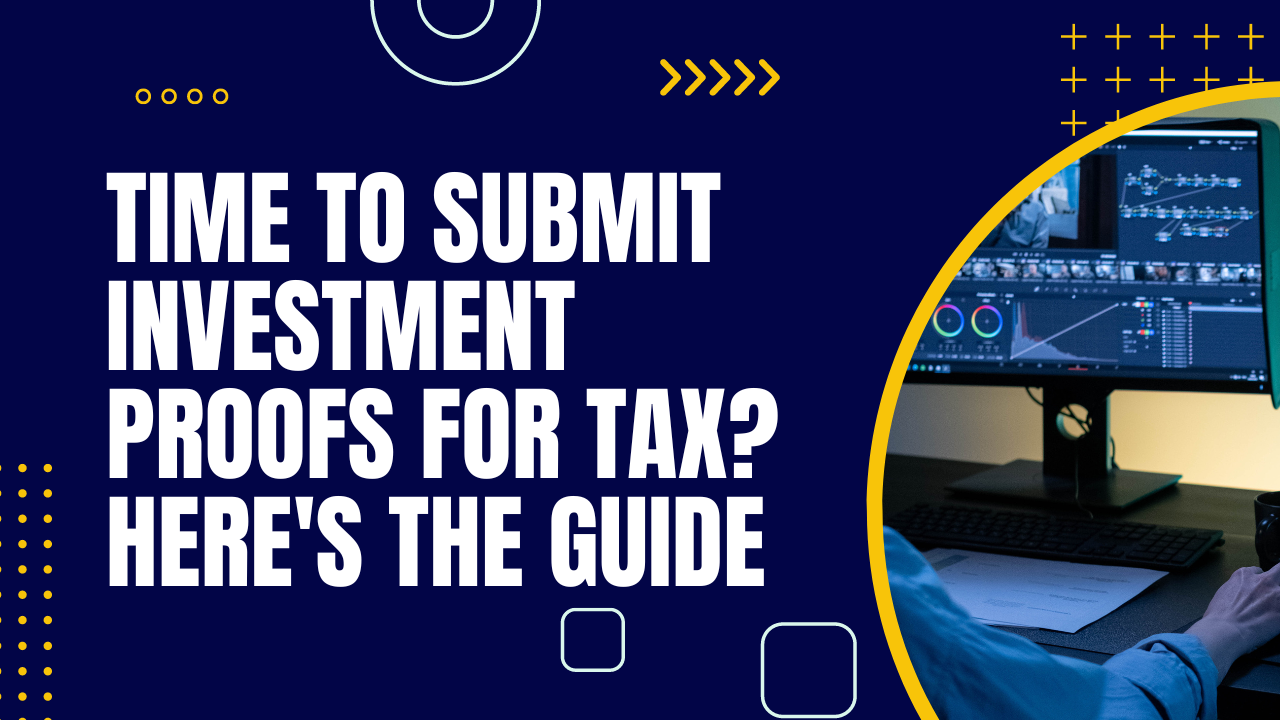The time to submit investment proofs for tax purposes depends on the specific regulations and deadlines set by your country’s tax authority. Typically, individuals are required to submit investment proofs and other supporting documents while filing their annual tax returns. These investment proofs may include documents such as investment statements, dividend certificates, capital gains records, or receipts for tax-deductible contributions. It is important to familiarize yourself with the tax laws and guidelines applicable to your jurisdiction and ensure timely submission of the necessary investment proofs to accurately report your taxable income and claim eligible deductions or exemptions.
Understanding Tax Filing Requirements
Understanding tax filing requirements is crucial when it comes to submitting investment proofs for tax purposes. Here’s what you need to know:
1. Tax Laws and Regulations: Familiarize yourself with the tax laws and regulations applicable in your country or jurisdiction. Different regions have varying rules regarding tax filing, reporting income, and submitting investment proofs.
2. Types of Investments: Determine which types of investments require proof for tax purposes. This may include stocks, mutual funds, bonds, real estate, or any other taxable investment.
3. Eligible Deductions and Exemptions: Understand the deductions and exemptions allowed by the tax authorities. Some investments may qualify for tax benefits or exemptions, and you need to gather the necessary proofs to claim these benefits.
4. Investment Income Reporting: Determine whether you need to report investment income on your tax return. This can include dividends, interest, capital gains, or rental income. Understand the specific forms or schedules required for reporting these incomes accurately.
5. Documentation Requirements: Review the specific documentation requirements for investment proofs. This may include investment statements, transaction records, interest certificates, capital gains statements, or other supporting documents provided by financial institutions or investment platforms.
6. Supporting Documents for Deductions: If you are claiming deductions based on your investments, gather the relevant supporting documents such as receipts for charitable contributions, education expenses, or retirement plan contributions.
7. Record Keeping: Maintain organized records of your investments, including purchase and sale transactions, dividend reinvestments, and any other relevant documents. This will help you accurately report your investment activities and provide necessary proofs during tax filing.
8. Consult Tax Professionals: If you are unsure about the tax filing requirements or need assistance in understanding specific investment proofs, consider consulting with a tax professional or accountant who can provide guidance based on your individual circumstances.
By understanding the tax filing requirements related to investment proofs, you can ensure compliance with the tax laws and accurately report your taxable income, deductions, and exemptions.
Organizing and Reviewing Investment Proofs
Organizing and reviewing investment proof documents is a critical step to ensure a smooth tax filing process. Once you have gathered all the necessary documents related to your investments, it’s important to organize them systematically. Create a dedicated folder or use digital storage to keep them organized and easily accessible.
Next, review each document carefully to ensure accuracy and completeness. Check that the investment statements reflect the correct dates, transaction details, and account balances. Verify that dividend certificates or interest statements accurately reflect the income earned from your investments. Review capital gains records to confirm the dates and amounts of any realized gains or losses.
Timelines and Deadlines for Submission
Understanding the timelines and deadlines for submission of investment proofs is crucial to ensure compliance with tax regulations. Here’s what you need to know:
1. Tax Filing Deadline: Familiarize yourself with the deadline for filing your tax return. This deadline varies depending on your jurisdiction and may fall on a specific date or be based on the end of the tax year.
2. Documentation Submission Deadline: Determine the deadline for submitting investment proofs along with your tax return. In some cases, investment proofs must be submitted with the tax return, while in others, they may need to be retained for a certain period but not submitted upfront.
3. Timeframe for Collecting Documents: Allow sufficient time to gather all the necessary investment proof documents. Consider the processing time required by financial institutions or investment platforms to provide the required statements or certificates.
4. Plan Ahead: Avoid last-minute rushes by planning ahead and collecting investment proofs well in advance of the tax filing deadline. This gives you ample time to review the documents for accuracy and address any discrepancies or missing information.
5. Extensions and Exceptions: Be aware of any extensions or exceptions provided by tax authorities. Some jurisdictions offer extensions for filing tax returns or provide specific provisions for certain types of investments or taxpayers. Familiarize yourself with these provisions and adhere to any special requirements.
6. Consult with Tax Professionals: If you have any doubts or questions regarding the timelines and deadlines for submitting investment proofs, it’s advisable to consult with a tax professional or accountant. They can provide guidance specific to your jurisdiction and help ensure timely compliance.
By understanding the timelines and deadlines for submission of investment proofs, you can stay organized, meet the requirements of tax authorities, and avoid penalties or late filing fees. Planning ahead and adhering to the prescribed timelines will enable a smooth tax filing process and ensure that your investment proofs are submitted in a timely manner.
Conclusion
In conclusion, submitting investment proofs with your tax returns is an essential part of ensuring accurate reporting and compliance with tax regulations. By understanding the timelines, deadlines, and requirements set by your tax authority, you can effectively gather, organize, and submit the necessary investment proof documents. This includes properly labeling and identifying the documents, presenting them in an organized manner, and retaining copies for your records. Following filing instructions and seeking professional assistance when needed can further enhance your tax filing process. By submitting complete and accurate investment proofs, you demonstrate transparency and minimize the risk of audits or penalties. Take the time to understand the specific requirements and guidelines to facilitate a smooth and successful tax filing experience.
Also Read:
- Investment Taxation: Understanding Capital Gains, Dividends, and More
- The Impact Of Inflation On Investments
- What is the safest way to reduce investment risk?
- What are the major four assets of an investor portfolio?




